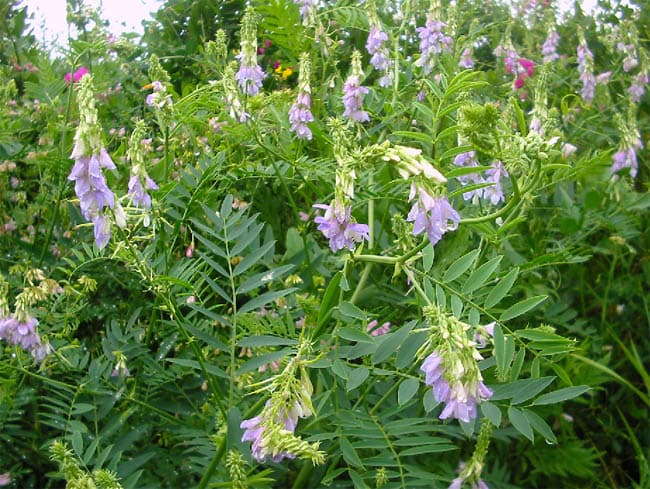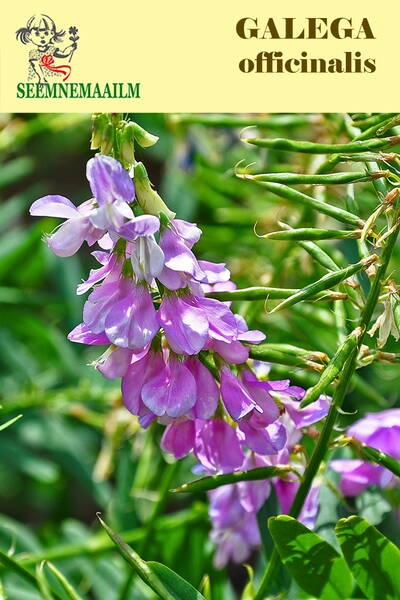Your shopping cart is empty!
Goat's rue (French lilac, Italian fitch, Professor-weed)
French lilac (Italian fitch, Professor-weed, Goat's rue) - Galega officinalis.
Abundant and long flowering.
Perennial from the Papilionaceae family.
Homeland: Eastern Mediterranean (from south to central Europe).
Flowering plant height: 100 cm.
Flower color: lilac with a bluish edge.
Foliage: odd-pinnate.
Natural flowering period: July - September.
Winter hardiness zones: Z3 – Z7.
Soil requirements: rich in humus, fertile.
1.0 g = 125 seeds.
A perennial herbaceous plant 40-150 cm tall with a branched bare stem.
Agricultural technology.
Prefers shaded and moist places with fertile soils. Naturally grows in shady deciduous forests, damp meadows, banks of rivers and streams, along the sides of forest roads. In cultivation it does not require care; it reproduces by seeds independently.
Use: can be cultivated in the garden as an ornamental plant. The aerial part (grass) of goat's rue is used in folk medicine as a diuretic, diaphoretic and anthelmintic.
Goat's rue tea is used in the treatment of diabetes. Goat's rue ointment is used for skin diseases.
The plant contains alkaloids galegin and saponin, oils, and tannins.
For treatment, goat's rue should be used with great caution and only on the recommendation of a doctor.

Goat's rue, French lilac, Italian fitch, Professor-weed.
Abundant and long flowering.
Perennial from the Papilionaceae family.
Homeland: Eastern Mediterranean (from south to central Europe).
Flowering plant height: 100 cm.
Flower color: lilac with a bluish edge.
Foliage: odd-pinnate.
Natural flowering period: July - September.
Winter hardiness zones: Z3 – Z7.
Soil requirements: rich in humus, fertile.
1.0 g = 125 seeds.
A perennial herbaceous plant 40-150 cm tall with a branched bare stem.
Agricultural technology.
Prefers shaded and moist places with fertile soils. Naturally grows in shady deciduous forests, damp meadows, banks of rivers and streams, along the sides of forest roads. In cultivation it does not require care; it reproduces by seeds independently.
Use: can be cultivated in the garden as an ornamental plant. The aerial part (grass) of goat's rue is used in folk medicine as a diuretic, diaphoretic and anthelmintic.
Goat's rue tea is used in the treatment of diabetes. Goat's rue ointment is used for skin diseases.
The plant contains alkaloids galegin and saponin, oils, and tannins.
For treatment, goat's rue should be used with great caution and only on the recommendation of a doctor.

Goat's rue, French lilac, Italian fitch, Professor-weed.












